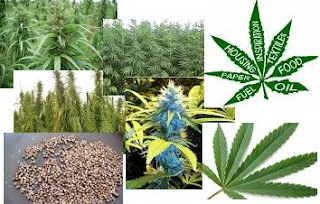As bloggers we often encounter to read some blogs about products made from hemp, like shoes, bags, food, oil and etc. But have we really understand what is hemp is all about? How does it looks like? Why they are so popular nowadays and noted as eco-friendly, environment-friendly, and or green products? So check out below some of the basic information:
Hemp normally requires very little fertilizer, and grows well almost anywhere. It is also pest resistant, so it uses no pesticides. Hemp puts down deep roots, which is very good for the soil, and when the leaves drop off the hemp plant, minerals and nitrogen are returned to the soil. Hemp has been known to grow on the same soil for twenty years in a row without any noticeable soil depletion. Using less fertilizer and pesticides is good for two reasons. First, it costs less and requires less effort. Second, many agricultural chemicals are dangerous and harmful to the environment -- the less we have to use, the better.
Why is hemp better for paper?
Tree paper requires many chemicals to produce quality paper, which are extremely hard on the environment. Paper can be made from hemp without the use of these harmful chemicals. Tree paper yellows and falls apart in a matter of decades, while hemp paper can last for centuries. Hemp paper has been found dating back 1500 years. One acre of hemp can produce as much paper as four acres of trees. Hemp paper is suitable for recycle use 7 or 8 times, compared to 3 times for tree paper. Trees must grow for 20 to 50 years before they can be harvested for commercial use. Hemp requires a growing season of only 100 days! By using hemp for paper,we could stop the deforestation of our country and produce stronger, more environmentally sound paper for less than half the cost of tree paper. Millions of acres of forest and wildlife habitat could be preserved.
to be continued...
 ", living in a treehouse is hardly child’s play; it has become a trendy and ecologically advanced accommodation option of the future. In his book it offers an exclusive glimpse into some of the most remarkable and creative living spaces found around the globe. See below for another great design of treehouses.
", living in a treehouse is hardly child’s play; it has become a trendy and ecologically advanced accommodation option of the future. In his book it offers an exclusive glimpse into some of the most remarkable and creative living spaces found around the globe. See below for another great design of treehouses. 












